 | November 15, 2025
|
|
|

2020/6/25
Unveiling the new flood response options in the COVID-19 era
By Gillian Ward - Watertoday.ca. Reprinted with permission. Originally posted on 2020/5/25
As Fort McMurray rebuilds after a 25 km ice jam caused the Athabasca River to reverse flow, submerging blocks of the downtown core, WaterToday continues our look at some of the novel barriers being rolled out across the country in anticipation of more frequently occurring floods.
Floodwaters have taken out many homes just rebuilt since wildfire forced the evacuation of this city four years ago, nearly to the day. This time, much of the damage is uninsured.
Disaster Relief Funds are available to assist homeowners and businesses back to a “viable position”, according to Mayor Don Scott in a video recorded address to his community, but it won’t be enough to return residents to the condition they enjoyed, the day before the flood.

Fort McMurray, AB April 28, 2020 - Stock Image
Just as so many Central and Eastern Ontario riverfront property owners were hit with damaging floods in two years out of the last four, fifteen thousand Albertans are added to the number of Canadians with first hand experience of the increasingly extreme effects of climate crisis, wondering what is coming next and how to prepare for it.
The Insurance Bureau of Canada invested in flood modeling to develop insurance products for overland flooding. IBC Vice President Craig Stewart advised WaterToday that an estimated ten percent of Canadian properties are high risk, not eligible for overland flood insurance at all. Plans being discussed for these properties prior to Covid-19 favour the option of federal buyout and relocation of residents, as we reported in https://www.watertoday.ca/ts-flooding-flood-proofing-across-the-nation.asp.
While the nation’s municipalities and insurance companies work out how to deal with future fire and flood threats, the pandemic hit, occupying resources and complicating matters for emergency response, civic involvement, and individual homeowner options.
The Mayors of Gatineau, Quebec and Calgary, Alberta were among municipal leaders reminding residents that physical distancing measures for Covid-19 would have to be maintained through flood season.
Calgary Mayor Naheed Nenshi addressed a virtual press gallery in early May, including an update for the 2020 Flood season. The Mayor handed off to River Engineering for the briefing, but not before letting it be known that if Calgary was to be struck with another flood during Covid-19, “that would be it for me!”
River Engineering spokesperson noted the above average snowpack in the mountains would be monitored 24/7. While the rate of melt is a major factor for flood risk in Calgary, the more important indicator of flood risk is heavy rain in conjunction with rapidly rising temperatures. Flood conditions in the City of Calgary can develop quickly, with mere hours notice.
Though the Cities of Gatineau and Calgary have both come through the spring melt of 2020 in relatively good shape, long term solutions are in the works.
In Gatineau, a city that experienced major losses in 2017 and again in 2019, a team of hydrological and planning experts has been enlisted to assess options based on proposals received in November 2019. At the time of this writing, no recommendations had been made by the committee.
In spring 2019, this resident was struck a second time with a flood that devastated his already devalued and uninsured property.
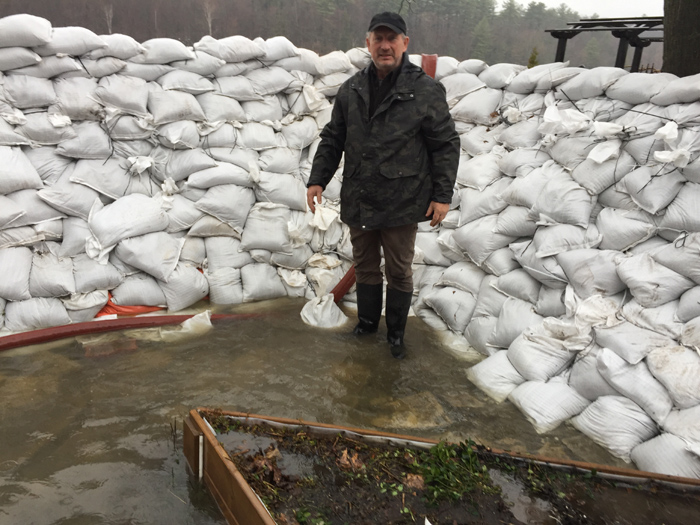
Sandbag wall in Gatineau - Stock Image
Riverfront property owners are often lacking public sympathy, as it is thought, ‘they must be rich, living where they do’. In fact, many of these flood plain homes have been in families for generations, are too old to be moved or lifted onto new foundations, and the owners are out of pocket for assistance with the construction and removal of temporary barriers. Many of these are no better equipped to deal with the unexpected expenses of a flood, or the uninsured losses than any homeowner in Canada.
Even with a sandbag wall in place, there is no rest, as pumps run around the clock to deal with leaks. Realizing that this situation could not be managed physically, mentally or financially if it were to happen again in his lifetime, this homeowner went on a search for a long-term flood solution.

Flood barrier in Gatineau - Stock Image
Flood Control Canada in Kelowna offers consulting and installation of a range of mechanical flood barriers, from fully automatic pop-up barriers to the temporary Inero wall that can be set up rapidly on any terrain and moved where it is needed year by year.
Engineered flood barriers have been in use in Europe for decades, but have not been popularized in Canada until recently, with the City of Calgary undertaking several projects. WaterToday looked in on the progress made at Heritage Drive, the latest infrastructure installation in Calgary’s flood preparedness plan.
After the Bow and Elbow Rivers burst their banks in 2013, taking five lives and losses in the billions of dollars, City of Calgary has upscaled its defenses accordingly. By the second day of the 2013 flood, Calgary had embarked on a process to assess, design and build out a comprehensive Flood Emergency Response Plan. This plan is more than half complete today, and includes engineered floodworks to safeguard traffic flow and key infrastructure.
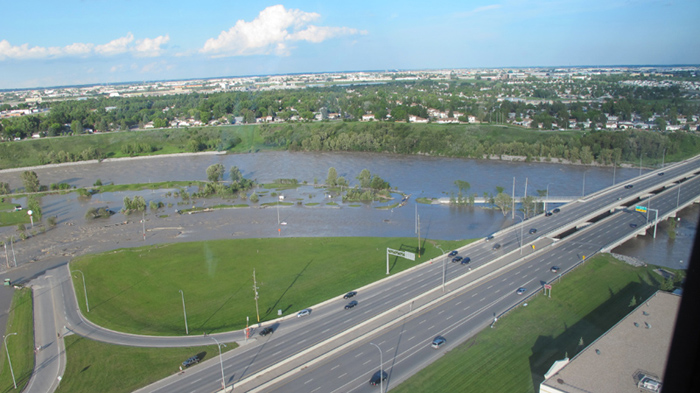
Heritage Drive Flooding 2013 - Photo Credit: City of Calgary
Communications Spokesperson for City of Calgary Water Resources Ashleigh Langmaid explains, “Heritage Drive is an important access route onto Glenmore Trail for emergency responders,” and key for maintaining traffic flow through the city. This piece of infrastructure is in the works presently, runs close to half a kilometre, and is expected to be completed in summer 2020.
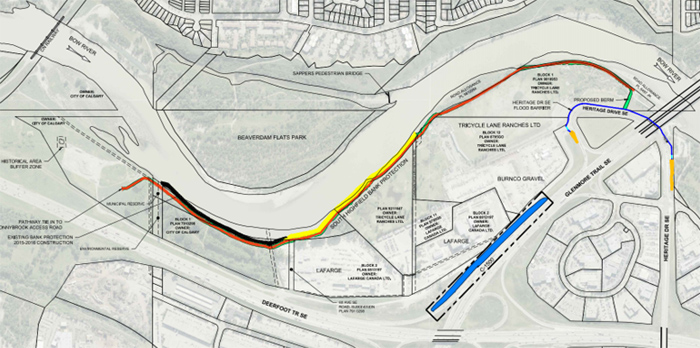
Heritage Drive Map - City of Calgary
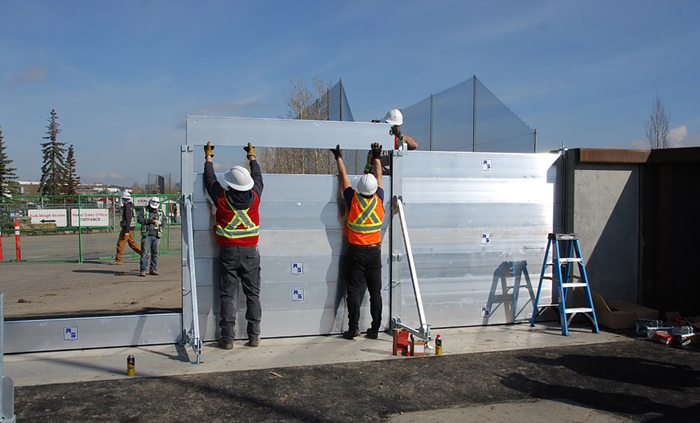
Heritage Drive Flood Wall - City of Calgary
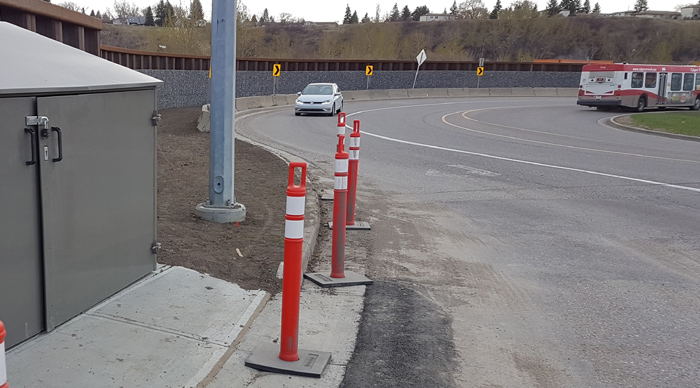
Heritage Drive Flood Wall - City of Calgary
https://www.calgary.ca/Transportation/TI/Pages/Pedestrian-bridges/Heritage-Drive-SE-flood-barrier.aspx
The Heritage Drive flood wall was to have been unveiled in a much-anticipated public event in April, which had to be cancelled for Covid-19. WaterToday will continue to follow the City of Calgary’s progress in completing these floodworks, edging Canada’s fourth largest population centre closer to flood resiliency.
gillian@watertoday.ca
|
|
|